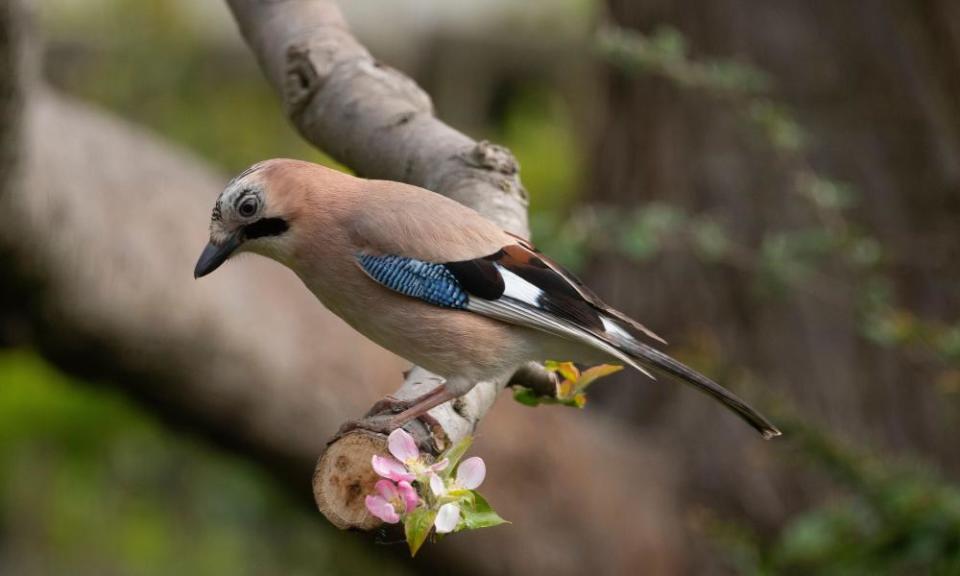Country diary: mighty oaks have sprung from the work of the lively jay

The rackety magpie family has moved home, from the ivy bush to a tall cypress with a dying ash tree beside it. I can see the convenience of this. The ash branches are perfect lookout posts to all quarters. The gloomy depths of the cypress provide suitable roosts for the entire magpie clan. But its established occupants are none too pleased. Collared doves grumble out their grievances daylong. The far more startling protests of the jays reach my ears from wherever my feet have taken me around the village.
Related: Country diary: magpies are not to be seen in black and white terms
Is there any more startling British birdcall than that of the jay? Its name in Welsh sums it up: sgrech y coed (screecher of the woods), though there is far more to this smallest and most beautiful of Britain’s native crows than its raucous voice of protest, which used to rouse my little terrier to paroxysms of indignation and fruitless pursuit.
The colour scheme of jays’ plumage – cinnamon and celestial azure – is exquisite, set off to perfection by velvet-black and pure white secondaries, a speckled crest, and the bright blue iris of the eye. This is a gorgeous bird. Its character too is distinctive: “tireless energy, and a liveliness of disposition and alertness almost without parallel among British birds” is how WH Hudson (1841-1922) described it. You more often hear it than see it, though. Centuries of persecution have left this vital, intelligent creature intensely wary of humankind.
Related: Country diary: colourful jays with electrifying chat
Its tireless energy in collecting and hiding acorns is surely responsible for great tracts of oakwood throughout Britain. The jay is truly, to adapt the title of Jean Giono’s haunting 1953 eco-fable, l’oiseau qui plantait des arbres, the bird that planted trees. Adaptation has a Darwinian relevance here too. The jay’s gullet relative to that of other corvids is enlarged, and copiously supplied with saliva to make regurgitation into the cache easier. Acorns – they can carry up to nine at a time– are at present off the menu. I catch the visionary flash of these sky-jewels dipping across low westering sunrays, heading out to estuarine fields for insects and worms before returning, lapidary in the last light, to roost.

